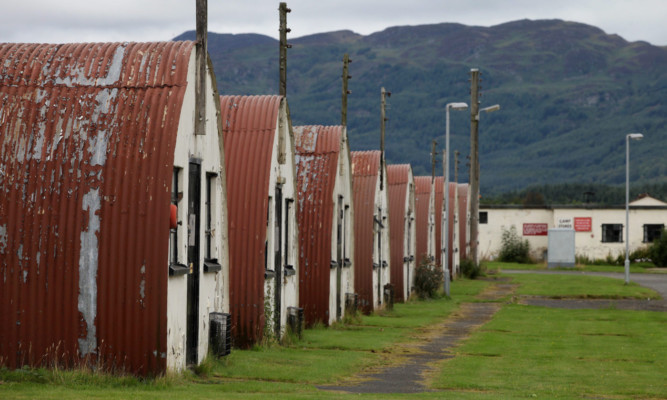A bunker built to protect Scotland’s leaders from nuclear threat will be opened to the public for one final time this weekend.
The underground facility at Cultybraggan Camp, near Comrie, is one of Scotland’s most intriguing Cold War buildings.
Constructed at a cost of £30 million, it was to have been the nation’s command centre in the event of an attack, only for its completion in 1990 to coincide with the end of the threat.
It has since been sold for just £150,000 to one of the UK’s most influential technology experts, Brandon Butterworth, who will convert the fall-out shelter into a secure data storage facility.
Before work begins, however, the BBC’s chief scientist has agreed to let the public explore the vault on Saturday and Sunday as part of the Doors Open Days programme.
Volunteers will take visitors round the canteen, the former BBC studio, the plant room and some of the dormitories.
The Comrie Development Trust (CDT), which owns Cultybraggan, will also be opening up a number of its iconic Nissen huts for the first time.
One of the most complete prisoner of war camps in the UK, Cultybraggan or Camp 21 was built in 1941 to house around 4,000 German prisoners.
They included some of the toughest and most fanatical Nazis, including many captured members of the SS and Afrika Corps.
The trust has been working hard to develop the site and opened a new Heritage Centre earlier this year.
Visitors have had the chance to walk around the impressively-preserved site but huts normally closed to the public, including the armoury, guard block, chapel and ablutions, will also be open.
CDT Heritage Group chair Fiona Davidson said: “There’s so much to do and see this weekend from guided tours and self-guided tours to having a go on an air raid siren.
“Unsung Heroes will also be returning to the camp with their hands-on World War Two exhibition and there will be the added bonus of a cup of tea and biscuits with the Scottish Military Vehicle Group.”
Admission is free but booking is essential and places should be secured by visiting bit.ly/bunkertourbooking.
Also open to the public at the weekend will be Collace Church, where there will be guided tours of the ancient site.
Between 1pm and 4pm on Saturday visitors will be shown around the churchyard, including the recently conserved morthouse, once used to protect bodies from the grave-robbing ressurectionists.
There will also be the chance to see the mausoleum with its Romanesque arch, a Pictish discoid stone and many unusual headstones.
The present building was completed in 1813 and restored 100 years later but is situated on a much earlier site, consecrated in 1242.
For full programme information visit www.doorsopendays.org.uk.
